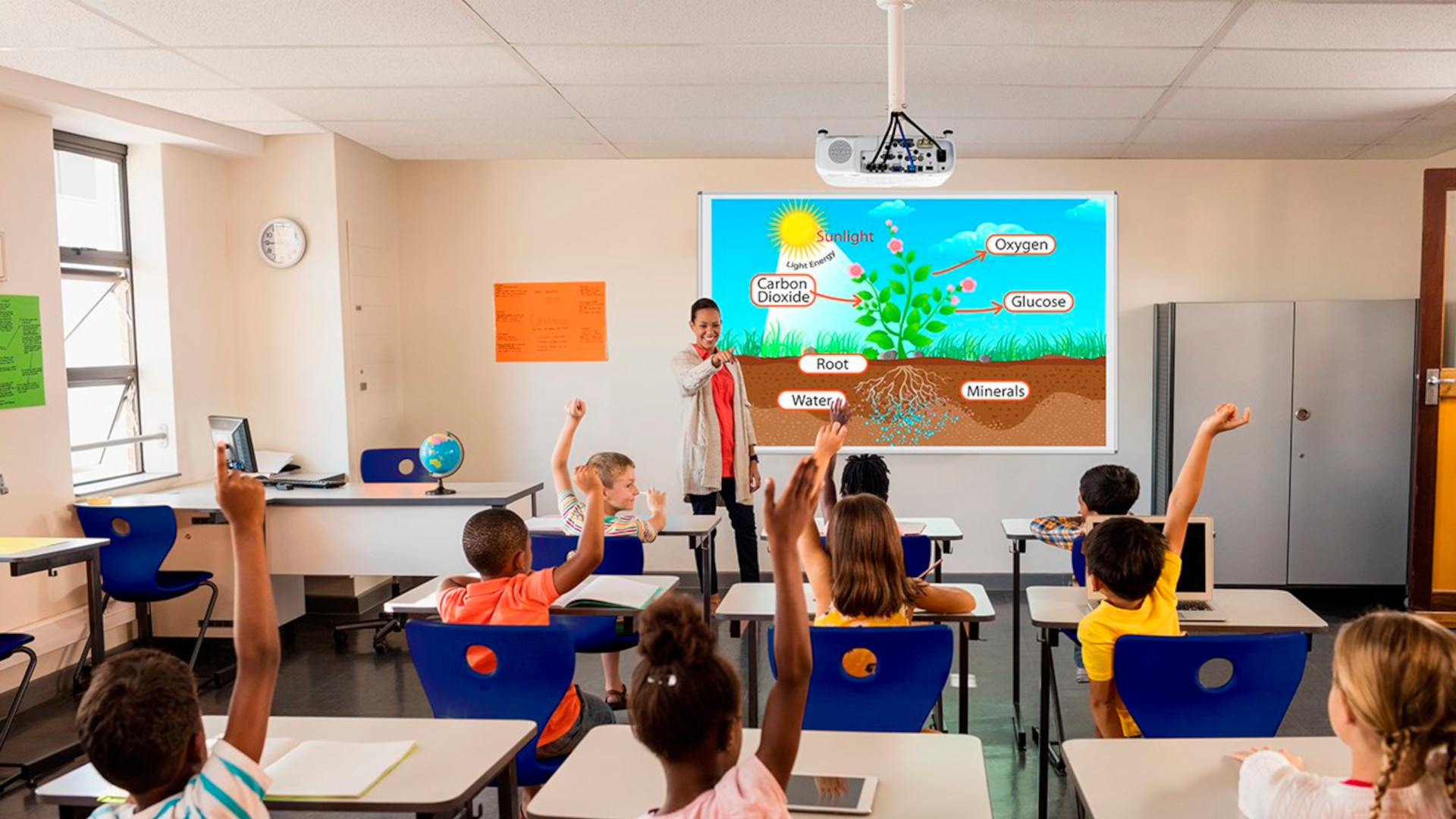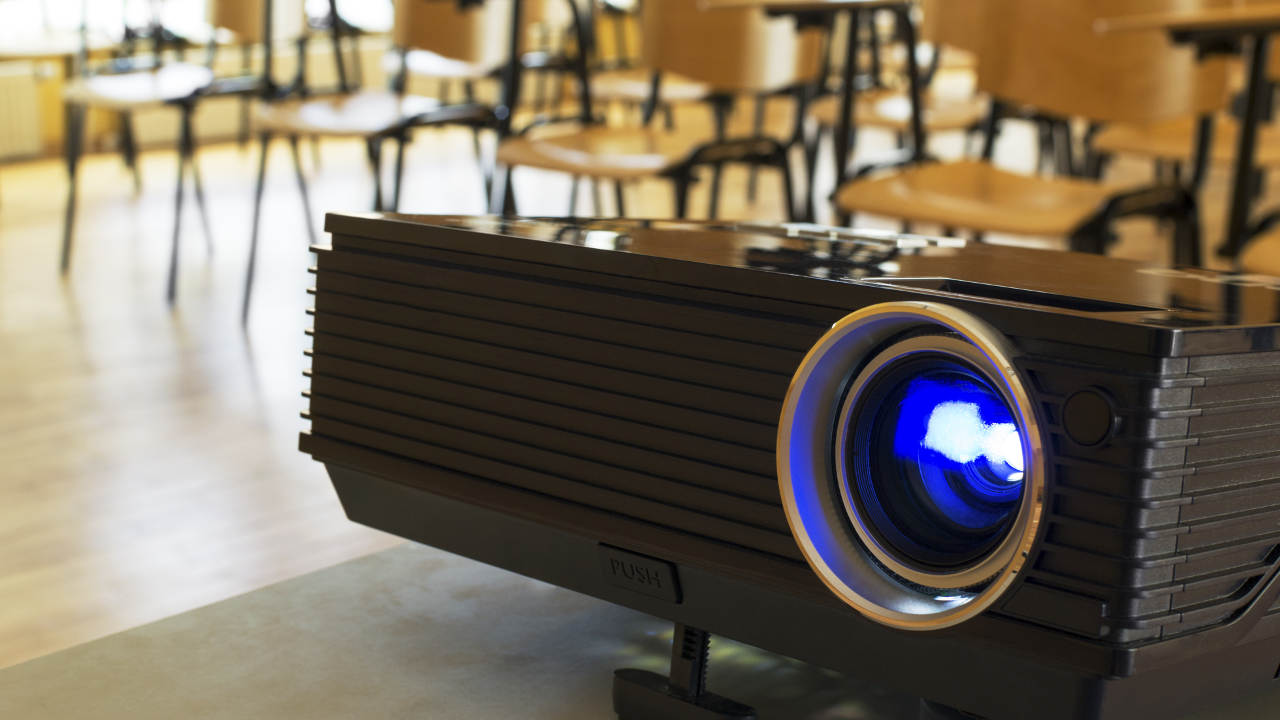What to Know About Buying A Projector for School
Buy the right projector for school with these helpful tips and guidance.

Picking the right projector for school can be a tough decision as the types and prices range pretty widely. From affordable options to professional grade pricing, there are many choices. The problem is that the performance is also hugely varied. This guide aims to be the solution by offering all you need to know about buying the right projector for school where you are.
A decent projector can be a great way to have the advantages of a large display without taking up classroom space. For example, a ceiling mounted projector, is as the name suggests, out of the way above the heads of everyone, only noticed when in use. Short throw projectors are ideal for use in smaller spaces and can also be mobile options, to use in various classrooms as needed.
Variations exist in resolution, brightness, color, contrast, light type, and maintenance needs, and some devices even offer touch recognition for interactivity. A good place to start is by thinking about who will use the projector and for what tasks -- helping you narrow down the ideal options.
Consider our best projectors for schools guide to find which model suits you ideally.

Which type of projector for school is best?
A fair few projector types are available to consider before you get started. The main categories are ceiling-mounted, freestanding, and short throw. These refer to how the projector is setup in the room.
Ceiling mounted is great for a permanent setup that takes up no real room space, is remotely controlled for instant access, and connects wirelessly to the internet. Not ideal for hardwire connections, unless your IT department has wired that into a terminal for lower level access.
Freestanding is a similar shape and will need to be placed on a table to throw its image. But this is more portable and frees up the option to use this in more than one place. Plus, you can plug directly in with ease here.
Tools and ideas to transform education. Sign up below.
Short throw projectors are ideal for smaller spaces where the distance between the projector and the wall, or board, is far less without losing any quality or distorting the angle of view. You can pay a premium for these models, but these are super portable, easy to plug into, and generally offer clear and bright images.
Screen quality
The display you get varies across the model types with lower and higher resolutions to be found in each category. Yet, there's more to consider when getting the ideal display output.
Brightness is arguably the most important factor to consider, especially if this is to be used in a bright classroom in daylight. Projector companies give this in a figure of lumens, in which the higher you go the better the results. Laser projectors offer very bright options here and generally last longer too. Aim for 3,000 lumens or more in darker rooms, and 5,000 and above for brightly lit classrooms.
Color is an important factor as the more you get, the greater the image vibrancy and richness on display. Many also offer HDR, which means the contrast will also be great -- all adding up to a more immersive experience. If you plan to watch videos on the projector, this is an especially important aspect to consider.
Resolution is a big consideration as you'll need a higher pixel count if you plan to use this as a larger screen. The bigger the image, the more blocky it will look if resolution isn't great. You'll want to get a 1080p as a minimum, but ideally a 4K resolution will suit as that can then be blown up to 100-inches and above without much loss to quality.

Light type
The light source varies in projectors between a bulb-powered model, a laser-based device, or LED options.
Bulbs, traditionally mercury-based, offer about a 5,000-hour lifetime before needing a replacement. Whereas LED and laser options last far longer, going closer to 60,000 hours of life before needing attention.
The LED and laser options are more expensive up front but with lower maintenance and running costs. These are also safer and more environmentally friendly, and can work out to be more affordable in the longer term.
It's also worth noting that laser projectors can offer far more colors and better contrast and definition for an end resulting image that is often superior to bulbs.
Connectivity
Most projectors are now wifi-connected, but it's also worth thinking about if you'll need access to ports. Will you need to plug in external drives, laptops, flash drives, and the like? Are Blu-ray players or consoles going to be used with the projector?
Most projectors come with HDMI and VGA connections as well as LAN internet and USB ports, and are highly compatible with most devices.
It's worth thinking about sound here, too. Many projectors come with speakers built in, but these aren't always the best quality. You can potentially save money and get a better audio setup by using speakers already in the school, so consider connectivity for audio if you're going for this option.
Pricing
The cost you’re willing to pay for your projector for schools, or many of these, is of course a big consideration. As mentioned, it’s important to consider the upfront charges, ongoing costs, and eventual replacement figures.
You may have been considering new displays in the school, and by going for a higher resolution projector, perhaps with touch interactivity, you can avoid buying interactive whiteboards as well.
Be sure to check warranty and guarantee coverage as some models offer extended periods to provide peace of mind while also suggesting these are built to last.
Luke Edwards is a freelance writer and editor with more than two decades of experience covering tech, science, and health. He writes for many publications covering health tech, software and apps, digital teaching tools, VPNs, TV, audio, smart home, antivirus, broadband, smartphones, cars and much more.
